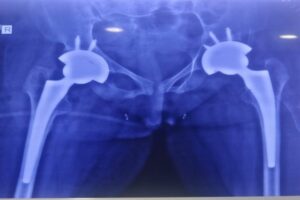Hip replacement surgery, also known as total hip arthroplasty, is a common and highly successful procedure for individuals suffering from severe hip pain and reduced mobility due to hip joint degeneration or injury. After undergoing hip replacement surgery, patients are eager to know when they can resume their normal activities and return to their daily routines. In this article, we will discuss the timeline for resuming various activities after hip replacement surgery and provide insights into the factors that influence the recovery process.
Immediate Postoperative Period:
Hospital Stay:
Following hip replacement surgery, patients typically stay in the hospital for a few days. The length of the hospital stay may vary depending on the individual’s overall health, the type of surgery performed, and the surgeon’s recommendation.
Walking with Assistance:
Soon after surgery, patients are encouraged to begin walking with the aid of a walker or crutches. Physical therapists will assist patients in initiating the process of regaining mobility and balance.
Pain Management:
During the immediate postoperative period, pain management is crucial. Pain medications are prescribed to ensure patients’ comfort as they start their recovery journey.
Rehabilitation:
Physical therapy starts in the hospital and continues after discharge. The rehabilitation program focuses on restoring hip strength, flexibility, and range of motion.
Week 1-2 After Hip Replacement Surgery:
Discharge and Home Care:
Most patients are discharged from the hospital within a few days after the surgery. Home care instructions are provided, including wound care, medication management, and specific precautions.
Walking Aids:
Patients may still require walking aids such as crutches or a walker during this stage of recovery.
Home Exercises:
Physical therapy exercises are continued at home to facilitate the recovery process. Adhering to the prescribed exercises is essential for achieving positive outcomes.
Driving Restrictions:
Driving is typically restricted during the initial weeks of recovery. Patients should consult their surgeon about when it is safe to resume driving.
Week 3-6 After Hip Replacement Surgery:
Reduced Reliance on Walking Aids:
As the hip continues to heal and strength improves, patients may begin to reduce their reliance on walking aids, transitioning to a cane if necessary.
Physical Therapy Progression:
Physical therapy sessions may become more challenging, focusing on increasing hip strength, stability, and functional movements.
Return to Light Activities:
Patients may gradually begin to engage in light activities, such as cooking, light household chores, and walking short distances.
Avoid High-Impact Activities:
High-impact activities, such as running and jumping, are still prohibited at this stage to protect the healing hip joint.
Week 6-12 After Hip Replacement Surgery:
Discontinuation of Walking Aids:
Patients may be able to discontinue the use of walking aids, depending on their progress and the surgeon’s evaluation.
Increasing Mobility:
Patients can expect an improvement in their hip mobility and range of motion. However, certain movements and positions may still cause discomfort.
Physical Therapy Advancements:
Physical therapy focuses on strengthening the hip muscles and improving balance and stability to support the hip joint.
Return to Low-Impact Activities:
Low-impact activities, such as swimming and stationary biking, may be gradually reintroduced with the surgeon’s approval.
3-6 Months After Hip Replacement Surgery:
Improved Comfort:
At this stage, most patients experience a significant reduction in hip pain and improved comfort during daily activities.
Enhanced Mobility:
Hip joint mobility continues to improve, allowing patients to perform a broader range of movements with less discomfort.
Resuming Normal Activities:
Patients may begin to resume normal daily activities, such as shopping, light gardening, and socializing.
Physical Therapy Completion:
Physical therapy may be completed or transitioned to a maintenance-based program at the discretion of the physical therapist and surgeon.
6-12 Months After Hip Replacement Surgery:
Full Recovery:
For many patients, the hip joint reaches its maximum level of healing and functionality within 6 to 12 months after surgery.
Return to Recreational Activities:
With the surgeon’s approval, patients can gradually return to recreational activities such as golfing, hiking, and dancing.
Long-Term Precautions:
While the hip joint is significantly improved, it is essential to remain cautious and avoid activities that may place excessive stress on the hip.
During the immediate postoperative period, patients focus on walking with assistance, managing pain, and engaging in physical therapy. As the weeks progress, patients gradually reduce their reliance on walking aids and increase their mobility. By 3-6 months, patients experience improved comfort, enhanced mobility, and a gradual return to normal activities.
Within 6-12 months, many patients achieve full recovery, allowing them to resume recreational activities and enjoy a higher quality of life. It is essential for patients to follow their surgeon’s guidance, commit to physical therapy, and prioritize their overall well-being to achieve the best possible outcome after hip replacement surgery.

